We kindly suggest you read the whole , because with it we try to give you detailed technical and historical information to guarantee the authenticity of our objects.
Valuable flower vase with a simple, linear shape in colored opaline glass; made between 1970 and 1975, it was blown in one piece without joints, then shaped with mastery by skilled artisans at the artisanal furnace in Murano, Italy, owned by Carlo Moretti, the vase's creative designer. The most difficult and special operation was to leave the opaline white on the inside and make the outside with decorations of another color; metal oxides were added to get the different colors when the draft of the opaline white vase had already left the kiln, at the precise moment in which the oxides began to melt and mix with the white, the craftsman began the blowing and the modeling of the vase, in a fast and rapid way, so that the color was distributed only on the surface of the object without penetrating as if they were brushstrokes, then he put the vase for a very short time in the oven and then proceeded to a fast cooling; an operation that not everyone is able to do, in fact, it is delegated only to the Glass Masters. The company was founded by Carlo Moretti with his brother Giovanni in 1958 in Murano. In the "factory of the author" Carlo Moretti materializes the infinite forms of glass in refined design objects; it starts from the breath, for that obligatory passage from liquid to solid, which is different every time, like breathing. This is followed by the skillful touch of his craftsmen's hands, a work that is the result of years of experience and secrets of the trade. In the "factory of the author" Carlo and Giovanni Moretti, ahead of their time, always innovate and begin by contaminating the glass with the power of color. As time went by, the two brothers increasingly defined their roles in the company: Carlo was mainly responsible for design and production, while Giovanni focused on communication and market strategies. They were able to reinvent the design of Murano glass, foreseeing in time the changes in taste and guiding them through the needs of the market, renewing production processes that had become cumbersome and continuously imagining communication strategies aimed at the intelligent internationalization of the island's production; Carlo Moretti used to say: "Only in appearance does the world of glass convey an idea of great flexibility because it never stands still, it moves and expands, but then when you get to know it well, it presents great limitations. That's why one enters the factory with one idea but leaves with another, and that's why Moretti was born as an art factory, where the skill of the master and the production processes count a lot. Glass is rebellious, it cannot be tamed, it is a material in continuous transformation, it has its own rules, it must be supported in all phases of the process." Measures diameter cm.11, height cm.19. The vase is in good condition. Those that can seem small defects internal or external to the glass (bubbles, lumps, streaks, etc.) are instead the testimony of the handicraft work and not the result of modern operations of mold.
Vi suggeriamo di leggere l'intero documento, perché con esso cerchiamo di fornire informazioni tecniche e storiche dettagliate per garantire l'autenticità dei nostri oggetti.
Prezioso vaso da fiori dalla forma semplice e lineare in vetro opalino colorato; realizzato tra il 1970 e il 1975, è stato soffiato in un unico pezzo senza giunture, poi modellato con maestria da abili artigiani presso la fornace artigianale di Murano, in Italia, di proprietà di Carlo Moretti, ideatore del vaso. L'operazione più difficile e particolare è stata quella di lasciare il bianco opalino all'interno e realizzare l'esterno con decorazioni di altro colore; gli ossidi metallici sono stati aggiunti per ottenere i diversi colori quando la bozza del vaso bianco opalino era già uscita dal forno; nel momento preciso in cui gli ossidi hanno iniziato a sciogliersi e a mescolarsi con il bianco, l'artigiano ha iniziato la soffiatura e la modellazione del vaso, in modo rapido e veloce, in modo che il colore si distribuisse solo sulla superficie dell'oggetto senza penetrare come se fossero pennellate, quindi ha messo il vaso per un tempo brevissimo in forno e poi ha proceduto a un rapido raffreddamento; un'operazione che non tutti sono in grado di fare, infatti è delegata solo ai Maestri Vetrai. L'azienda è stata fondata da Carlo Moretti con il fratello Giovanni nel 1958 a Murano. Nella "fabbrica dell'autore" Carlo Moretti materializza le infinite forme del vetro in raffinati oggetti di design; si parte dal soffio, per quel passaggio obbligato dal liquido al solido, che è ogni volta diverso, come il respiro. Segue il tocco sapiente delle sue mani artigiane, un lavoro frutto di anni di esperienza e segreti del mestiere. Nella "fabbrica dell'autore" Carlo e Giovanni Moretti, in anticipo sui tempi, innovano sempre e iniziano contaminando il vetro con la forza del colore. Con il passare del tempo, i due fratelli definiscono sempre più i loro ruoli in azienda: Carlo si occupava principalmente del design e della produzione, mentre Giovanni si concentrava sulla comunicazione e sulle strategie di mercato. Furono in grado di reinventare il design del vetro di Murano, prevedendo per tempo i cambiamenti del gusto e guidandoli attraverso le esigenze del mercato, rinnovando i processi produttivi che erano diventati macchinosi e immaginando continuamente strategie di comunicazione volte all'internazionalizzazione intelligente della produzione dell'isola; Carlo Moretti era solito dire: "Solo in apparenza il mondo del vetro trasmette un'idea di grande flessibilità perché non sta mai fermo, si muove e si espande, ma poi quando lo si conosce bene, presenta grandi limiti". Ecco perché si entra in fabbrica con un'idea ma si esce con un'altra, ed ecco perché Moretti è nata come fabbrica d'arte, dove contano molto l'abilità del maestro e i processi produttivi. Il vetro è ribelle, non si può domare, è un materiale in continua trasformazione, ha le sue regole, va assecondato in tutte le fasi del processo." Misure diametro cm.11, altezza cm.19. Il vaso è in buone condizioni. Quelli che possono sembrare piccoli difetti interni o esterni al vetro (bolle, grumi, striature, ecc.) sono invece la testimonianza del lavoro artigianale e non il risultato di moderne operazioni di stampaggio.


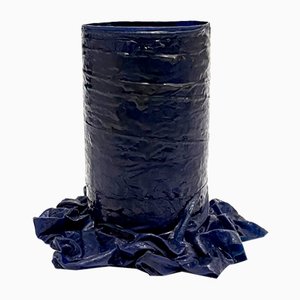


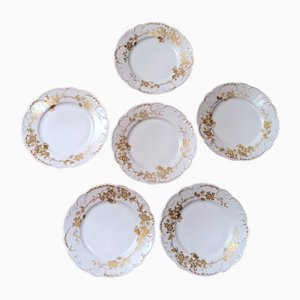
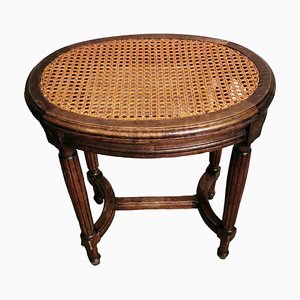
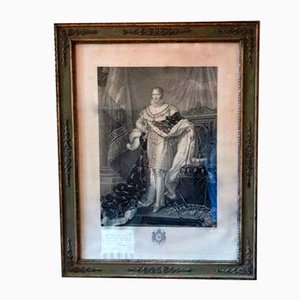

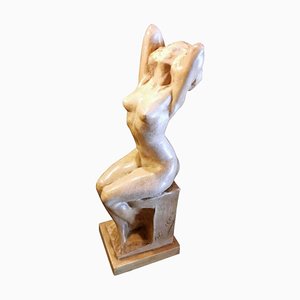
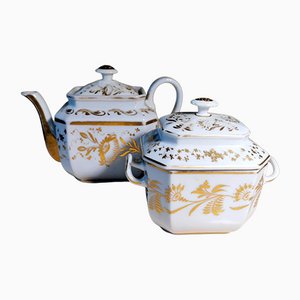
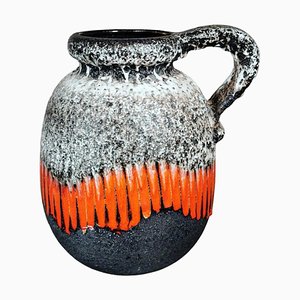
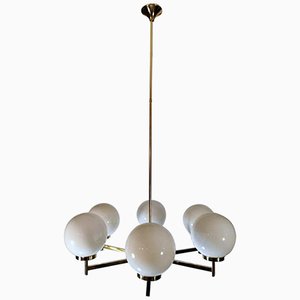
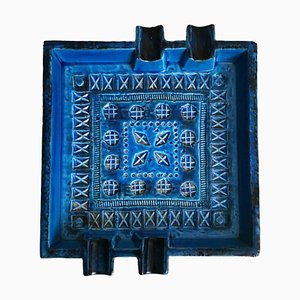
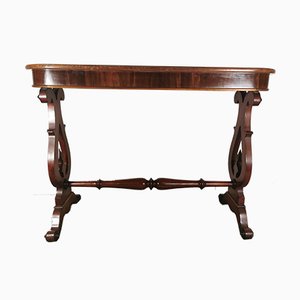

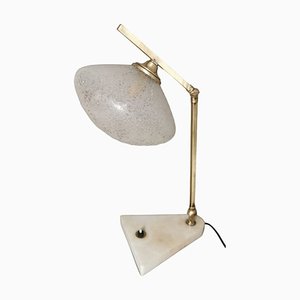
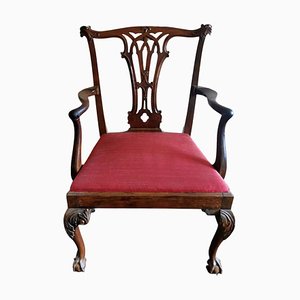
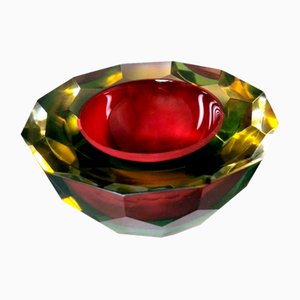

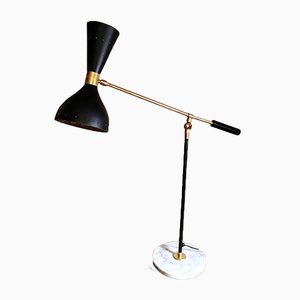
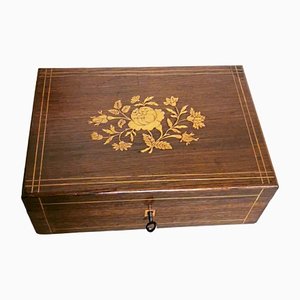
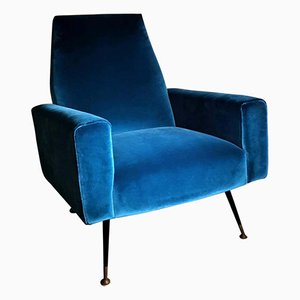
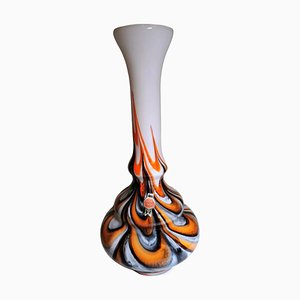
Contattaci
Fai un'offerta
Abbiamo notato che sei nuovo su Pamono!
Accetta i Termini e condizioni e l'Informativa sulla privacy
Contattaci
Fai un'offerta
Ci siamo quasi!
Per seguire la conversazione sulla piattaforma, si prega di completare la registrazione. Per procedere con la tua offerta sulla piattaforma, ti preghiamo di completare la registrazione.Successo
Grazie per la vostra richiesta, qualcuno del nostro team vi contatterà a breve.
Se sei un professionista del design, fai domanda qui per i vantaggi del Programma Commerciale di Pamono